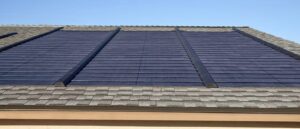In the world of solar hot water there are many names for systems that are identical or do similar things. It is important to know the basics and general components of any system one is working with. Once the basics are understood and mastered then it is possible to have intelligent conversations about a subject even though the terminology may be different.
I would like to go into the two basic components of solar hot water, the collectors and the circulation system.
Collectors
Collectors are the part of the system that collects the radiant energy from the sun and transfers it into the system for use.
Batch collectors:
This collector consists of a dark colored tank or a series of tubes within an insulated box. The water then remains in the system tank until there is demand for the water. This system can overheat if there is low demand so a release valve should be part of the system. There is also another valve often know as a tempering valve that mixes in cold water as needed in order to avoid scalding.
This system is not recommended in climates where freezing occurs. Also by definition it is incompatible with a closed loop system discussed below.
Flat plate collectors:
This is a flat insulated box that is faced in tempered glass and backed with a panel that is painted flat black. In the middles are a series of parallel pipes that are connected on each end with inlet and outlet manifolds.
Sizing varies on climate and family size. In the Denver area 65 SF of collector combined with a 120 gallon tank is a good starting point for a family of 4.
Evacuated tube collectors:
This is the most high-tech collector solution. In this collector there is a series of glass tubes. Each glass tube contains water or glycol and is then surrounded by another glass tube. The air between the two is vacuumed out which insulates the tubes from heat loss.
This collector is the most efficient currently available. It can work in overcast conditions and temperatures of up to 40° below zero.
Circulation
Circulation is how the hot water from the collector gets into home so it can be used. Circulation is a combination of direct/indirect and active/passive.
Active:
An active system uses pumps to circulation the water or glycol through the system. This is the most reliable system but requires energy to operate the pump.
Passive:
This circulation system relies on the natural convection of hot and cold water known as thermosiphon. This relies on the tendency of hot water to rise and cold water to sink. This can be unreliable due to air entrainment and in sufficient temperature gradients.
Direct:
In a direct system the water circulates through the collectors and then either stored in a tank or used immediately. This water is directly used so that the water in the system is the same water that is used to wash clothes or take a shower.
Indirect:
Indirect, also known as closed loop, are the best systems for use in climates where freezing occurs. Here the system circulates a water and glycol solution that does not freeze. The mixture then circulates through a heat exchanger in a storage tank in order to provide hot water.
When used in the correct way, solar hot water can be a great way to provide hot water and reduce our dependency on fossil fuels as energy sources. It is also a good way to reduce energy bills and conserve water. When we know there isn’t limitless hot water in the tank people tend to use water more efficiently.










